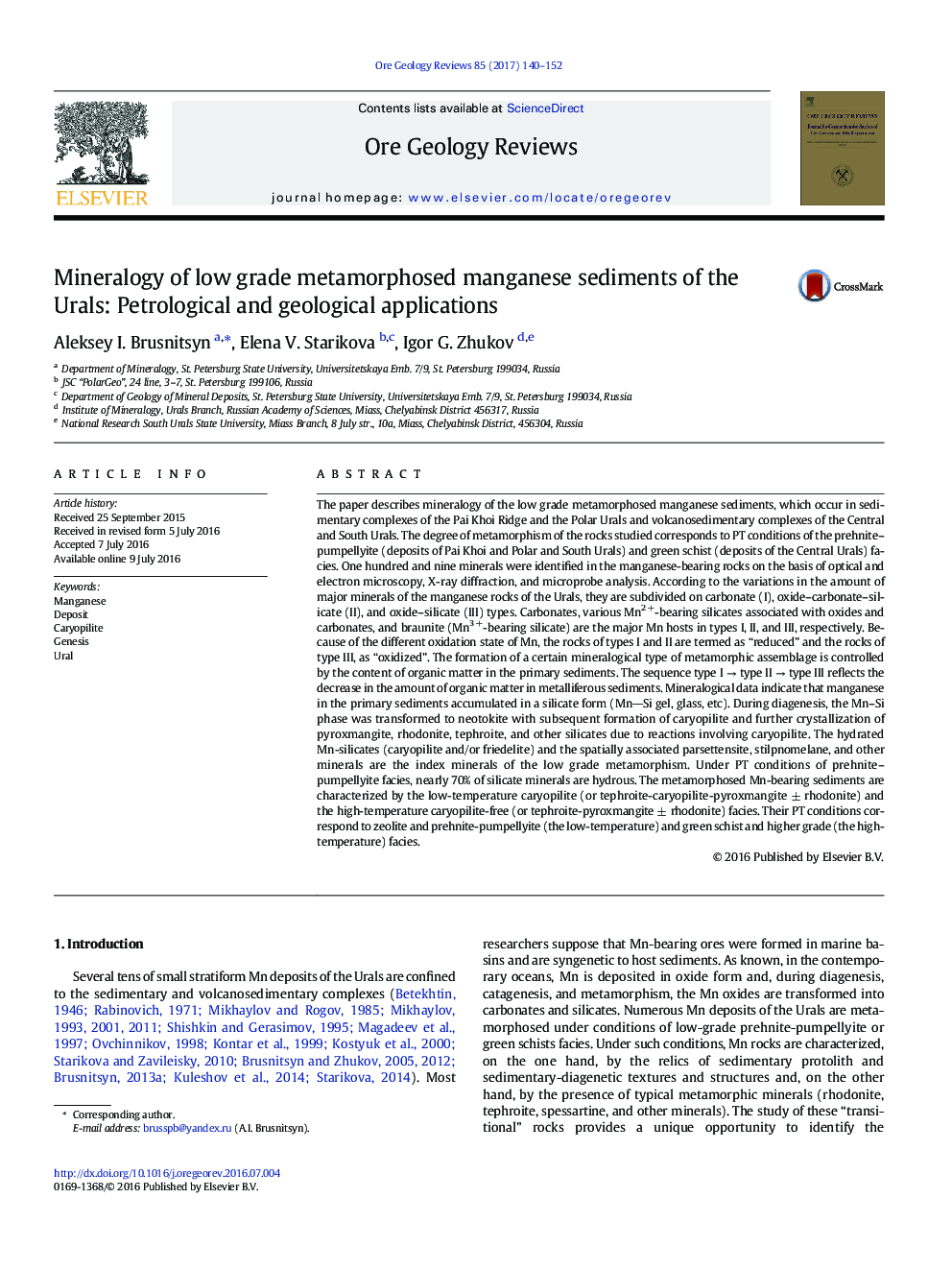| کد مقاله | کد نشریه | سال انتشار | مقاله انگلیسی | نسخه تمام متن |
|---|---|---|---|---|
| 5782505 | 1637222 | 2017 | 13 صفحه PDF | دانلود رایگان |
- First study of the low grade metamorphosed manganese sediments from Urals.
- The rocks are subdivided to 3 types: I) carbonate, II) oxide-carbonate-silicate and III) oxide-silicate
- 104 minerals were identified in manganese rocks
- The rocks contain two different facies - low-temperature caryopilite and high-temperature caryopilite-free
The paper describes mineralogy of the low grade metamorphosed manganese sediments, which occur in sedimentary complexes of the Pai Khoi Ridge and the Polar Urals and volcanosedimentary complexes of the Central and South Urals. The degree of metamorphism of the rocks studied corresponds to PT conditions of the prehnite-pumpellyite (deposits of Pai Khoi and Polar and South Urals) and green schist (deposits of the Central Urals) facies. One hundred and nine minerals were identified in the manganese-bearing rocks on the basis of optical and electron microscopy, X-ray diffraction, and microprobe analysis. According to the variations in the amount of major minerals of the manganese rocks of the Urals, they are subdivided on carbonate (I), oxide-carbonate-silicate (II), and oxide-silicate (III) types. Carbonates, various Mn2 +-bearing silicates associated with oxides and carbonates, and braunite (Mn3 +-bearing silicate) are the major Mn hosts in types I, II, and III, respectively. Because of the different oxidation state of Mn, the rocks of types I and II are termed as “reduced” and the rocks of type III, as “oxidized”. The formation of a certain mineralogical type of metamorphic assemblage is controlled by the content of organic matter in the primary sediments. The sequence type I â type II â type III reflects the decrease in the amount of organic matter in metalliferous sediments. Mineralogical data indicate that manganese in the primary sediments accumulated in a silicate form (MnSi gel, glass, etc). During diagenesis, the Mn-Si phase was transformed to neotokite with subsequent formation of caryopilite and further crystallization of pyroxmangite, rhodonite, tephroite, and other silicates due to reactions involving caryopilite. The hydrated Mn-silicates (caryopilite and/or friedelite) and the spatially associated parsettensite, stilpnomelane, and other minerals are the index minerals of the low grade metamorphism. Under PT conditions of prehnite-pumpellyite facies, nearly 70% of silicate minerals are hydrous. The metamorphosed Mn-bearing sediments are characterized by the low-temperature caryopilite (or tephroite-caryopilite-pyroxmangite ± rhodonite) and the high-temperature caryopilite-free (or tephroite-pyroxmangite ± rhodonite) facies. Their PT conditions correspond to zeolite and prehnite-pumpellyite (the low-temperature) and green schist and higher grade (the high-temperature) facies.
375
Journal: Ore Geology Reviews - Volume 85, May 2017, Pages 140-152
